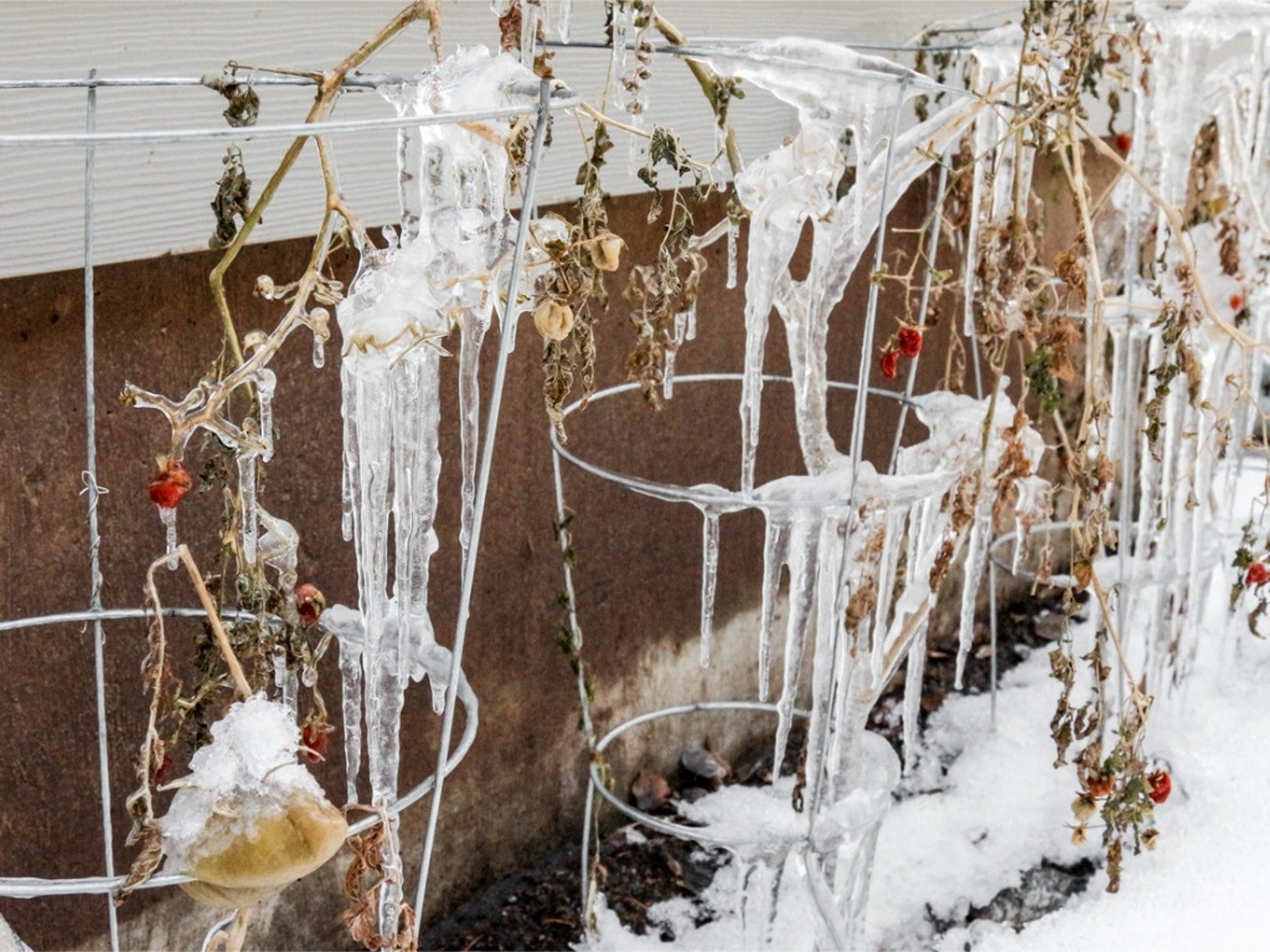How To Protect Tomatoes From Frost


As many of us gardeners know, tomatoes are a warm-season crop. Even a light frost can damage both the foliage and the fruit of tomato plants. In addition, many areas of the US can experience an early fall frost that is followed by several weeks of warm weather. Providing frost protection for tomatoes can extend their growing season.
Can Tomato Plants Survive Frost if Covered?
Predicting a frost can be tricky. Many factors, such as cloud cover and wind speed, affect how cold air settles to the ground. To complicate matters, frost can form whenever the ground temperature reaches 32 degrees F (0 C). Yet, meteorologists measure ambient temperatures at 4 feet (1.2 m) above the ground.
This means gardeners can have frost even when the weather forecast predicts overnight temperatures will remain above freezing. Whenever a frost warning is issued, moving container plants inside or covering garden tomatoes can save this valuable crop. Covering plants traps heat and can keep the air around the plants several degrees warmer than the ambient temperature.
If possible, water the soil around the base of garden tomato plants several hours before covering them, as moist soil retains more heat. Be sure the water has soaked into the ground to prevent the material used to cover the plants from becoming damp. Wet covers can freeze and damage the plants beneath them.
Follow these additional tips when protecting tomato plants from frost:
Unstaked tomatoes
Tomato plants growing low to the ground can be covered with a thick layer of leaves, newspaper, cardboard or cotton blankets.
Dwarf tomatoes
Cardboard boxes make ideal frost covers for small-sized tomato plants.
Sign up for the Gardening Know How newsletter today and receive a free copy of our e-book "How to Grow Delicious Tomatoes".
Staked tomatoes
Use cloche cloth or cotton fabric, such as old sheets and blankets, to cover larger plants. Avoid plastic sheeting or poly tarps as these trap moisture on the leaves which can actually lead to frost damage.
Hoop house
Erecting low tunnels over rows of tomatoes will also trap heat. These can be covered with plastic as long as it doesn't make contact with the foliage.
To prevent warm air from escaping and cold air from entering, covers should go all the way to ground. Securing the edges with rocks helps keep the covers in place.
Are Tomatoes Still Good After a Frost?
Once the frost melts in the morning, it's safe to remove the covers. If the foliage and fruit appear undamaged, the tomatoes can be left on the vine to ripen. However, if you find frost-damaged tomatoes in the garden (or you were caught off guard and didn't cover the plants), you can salvage some of the crop by working quickly.
Only pick the fully ripe tomatoes, as unripe fruit will not keep. If the tomatoes are still frozen, they can be transferred to the freezer for future use. Otherwise, use them immediately.
Once frozen, tomatoes become mushy when thawed. They are not well suited for fresh consumption, but can be used in cooked dishes such as stews or made into sauce. It's not advisable to use damaged tomatoes for canning.
Picking Tomatoes Before Frost
How much cold can tomatoes tolerate in the fall weather? Covering tomatoes usually provides adequate protection from frost and light freezes. However, the foliage and fruit will likely suffer damage should the overnight temperature fall to 28 degrees F (-2.2 C) or below for several hours. Meteorologists call this type of event a hard freeze. If a hard freeze is in the forecast, it's best to harvest the tomatoes and bring them inside the house.
To ripen tomatoes indoors, store the fruit above 55 degrees F (13 C). Tomatoes which have reached the breaker stage will produce their own ethylene gas, which is necessary for ripening. Check the tomatoes regularly and use them when they reach peak ripeness.
- Fully ripe tomatoes will keep up to two weeks at room temperature. Ripe fruit can be canned, frozen, or dehydrated.
- Partially ripe tomatoes and those which have reached the breaker stage (exhibiting a slight tinge of pink near the blossom end) will continue to ripen indoors.
- Green tomatoes can be picked and used for fried green tomatoes or green salsa, but will not ripen off the vine.

Laura Miller has been gardening all her life. Holding a degree in Biology, Nutrition, and Agriculture, Laura's area of expertise is vegetables, herbs, and all things edible. She lives in Ohio.